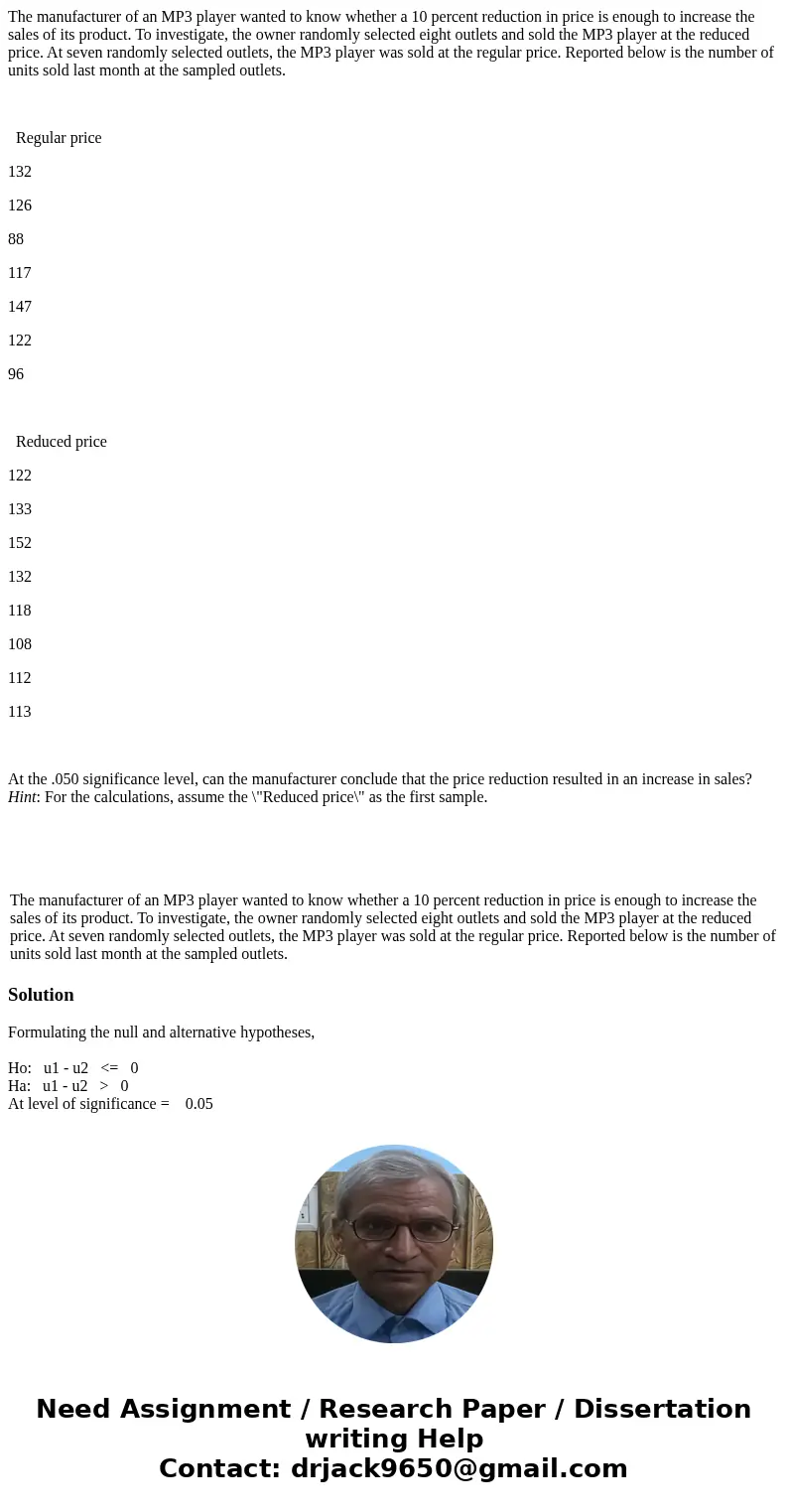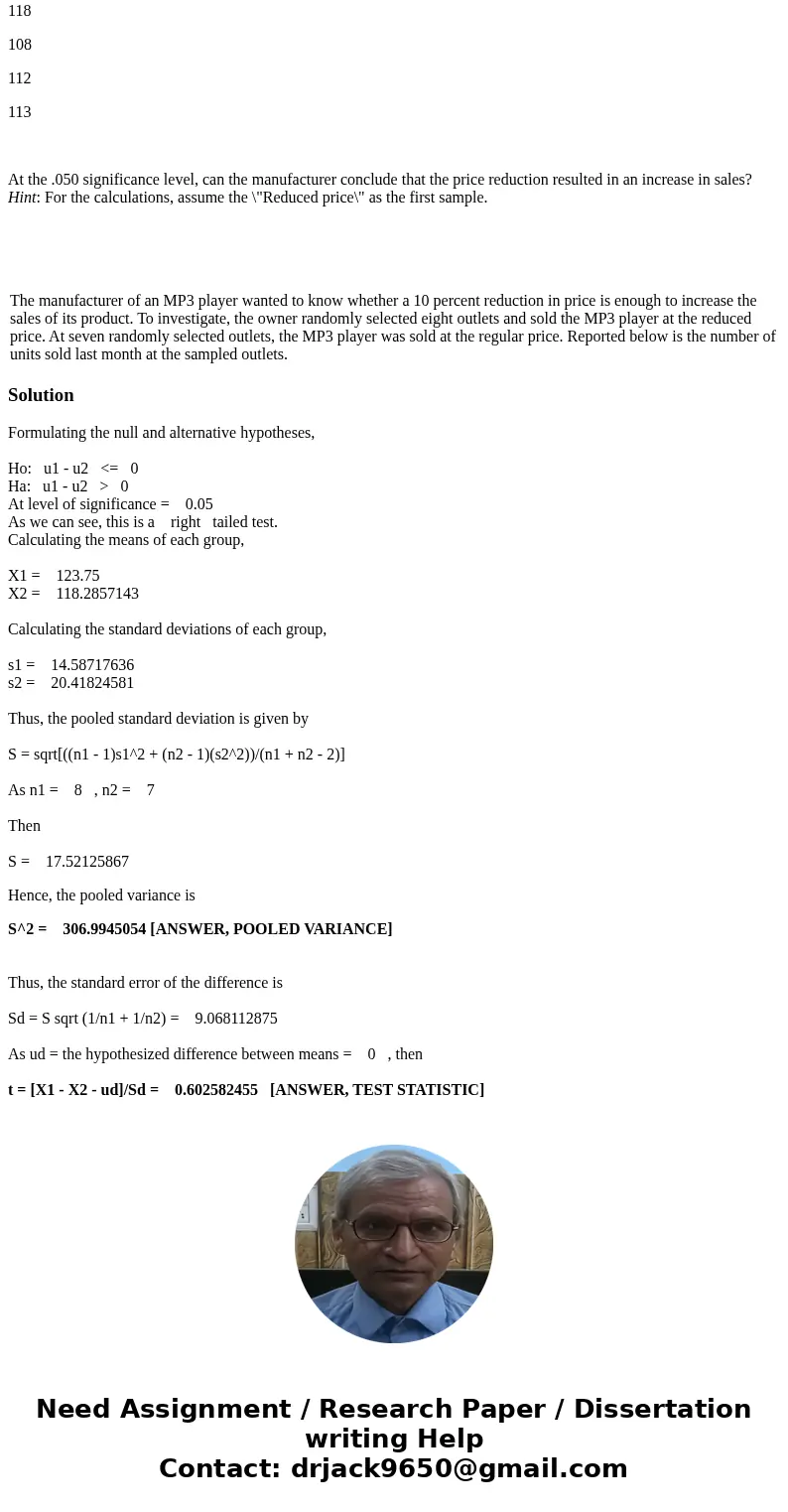The manufacturer of an MP3 player wanted to know whether a 1
The manufacturer of an MP3 player wanted to know whether a 10 percent reduction in price is enough to increase the sales of its product. To investigate, the owner randomly selected eight outlets and sold the MP3 player at the reduced price. At seven randomly selected outlets, the MP3 player was sold at the regular price. Reported below is the number of units sold last month at the sampled outlets.
Regular price
132
126
88
117
147
122
96
Reduced price
122
133
152
132
118
108
112
113
At the .050 significance level, can the manufacturer conclude that the price reduction resulted in an increase in sales? Hint: For the calculations, assume the \"Reduced price\" as the first sample.
| The manufacturer of an MP3 player wanted to know whether a 10 percent reduction in price is enough to increase the sales of its product. To investigate, the owner randomly selected eight outlets and sold the MP3 player at the reduced price. At seven randomly selected outlets, the MP3 player was sold at the regular price. Reported below is the number of units sold last month at the sampled outlets. |
Solution
Formulating the null and alternative hypotheses,
Ho: u1 - u2 <= 0
Ha: u1 - u2 > 0
At level of significance = 0.05
As we can see, this is a right tailed test.
Calculating the means of each group,
X1 = 123.75
X2 = 118.2857143
Calculating the standard deviations of each group,
s1 = 14.58717636
s2 = 20.41824581
Thus, the pooled standard deviation is given by
S = sqrt[((n1 - 1)s1^2 + (n2 - 1)(s2^2))/(n1 + n2 - 2)]
As n1 = 8 , n2 = 7
Then
S = 17.52125867
Hence, the pooled variance is
S^2 = 306.9945054 [ANSWER, POOLED VARIANCE]
Thus, the standard error of the difference is
Sd = S sqrt (1/n1 + 1/n2) = 9.068112875
As ud = the hypothesized difference between means = 0 , then
t = [X1 - X2 - ud]/Sd = 0.602582455 [ANSWER, TEST STATISTIC]


 Homework Sourse
Homework Sourse